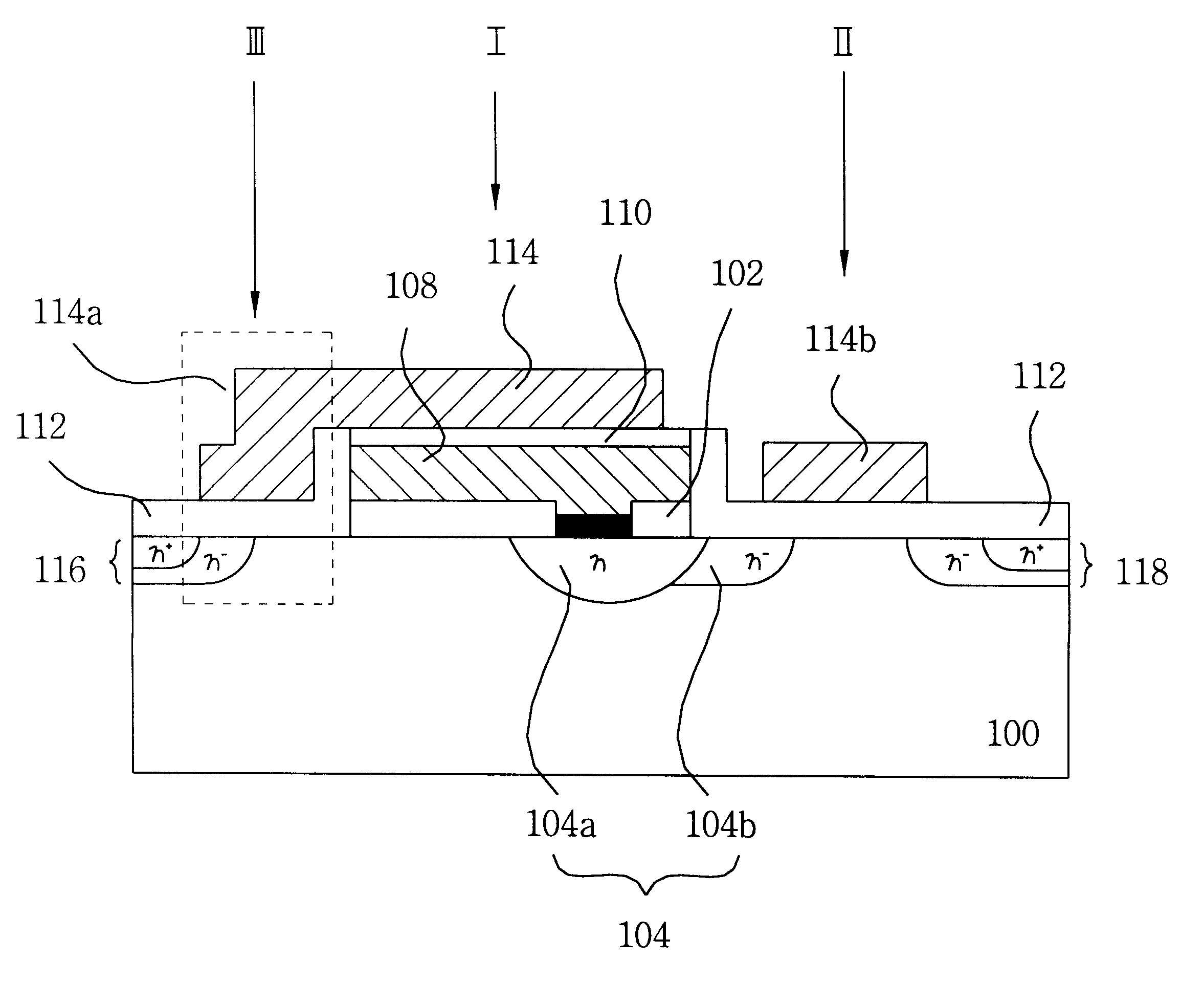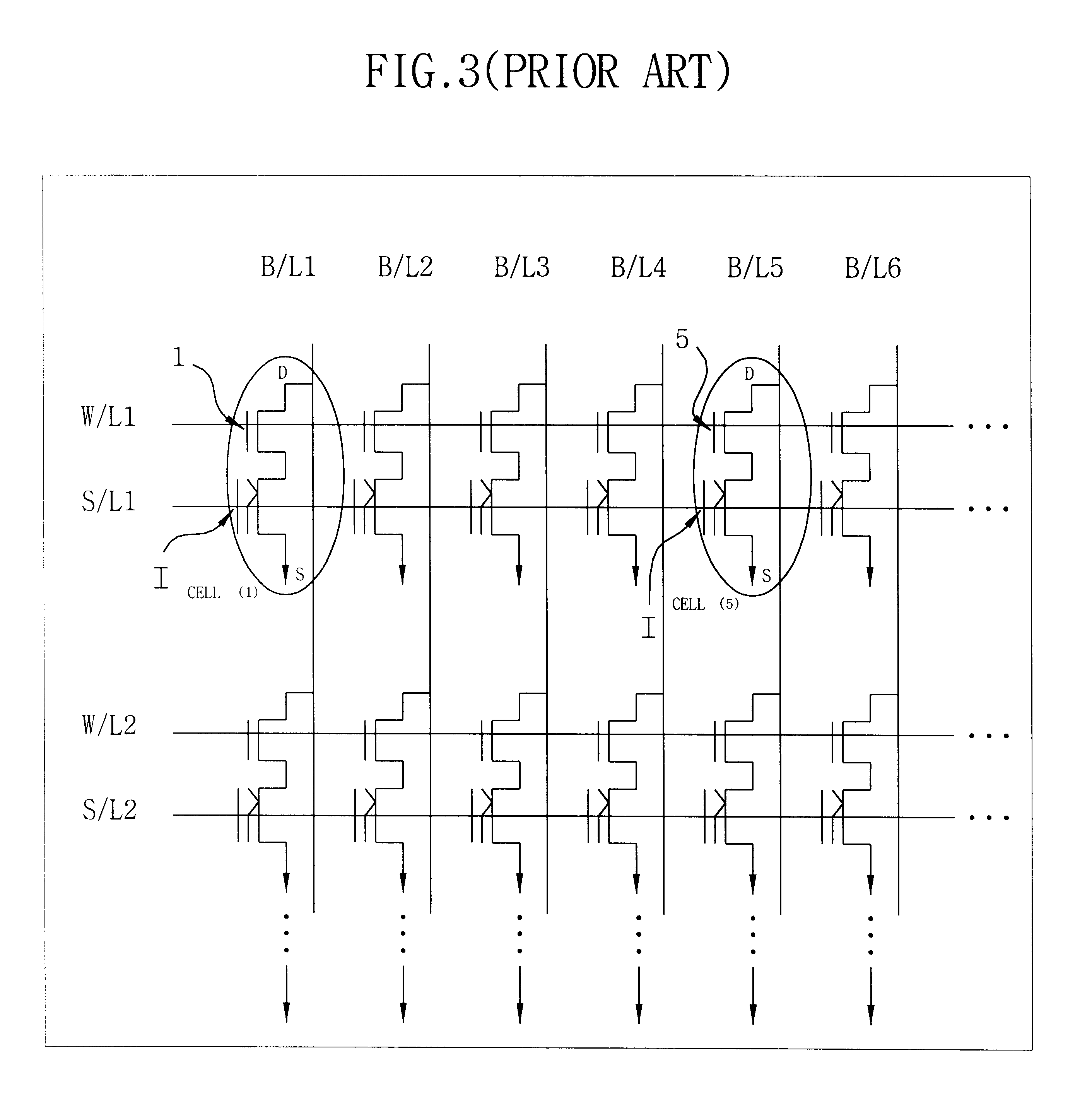Non-volatile memory device with single-layered overwriting transistor
a memory device and transistor technology, applied in semiconductor devices, instruments, electrical devices, etc., can solve the problems of low product reliability, failure to form a channel in order to stop current, and memory cells constructed in the above manner will have problems in the overwriting process
- Summary
- Abstract
- Description
- Claims
- Application Information
AI Technical Summary
Problems solved by technology
Method used
Image
Examples
Embodiment Construction
Applicants' Korean Patent Application No. 99-28217, filed Jul. 13, 1999 is incorporated herein by reference as if fully set forth herein.
Hereinafter, a preferred embodiment of the present invention will be described in detail with reference to the accompanying drawings.
Referring to FIGS. 4 and 5, a FLOTOX type EEPROM device comprises a n-type junction 104 formed at a predetermined position inside a p-type substrate 100. A source 116, constructed in an n- / n+ double junction structure inside the substrate 100, is at a predetermined distance from one side of the junction 104. A drain 118, constructed in an n- / n+ double junction structure inside the substrate 100, is at a predetermined distance from the other side of the junction 104. A sense transistor I includes a gate formed in a deposition structure of a first conductivity layer 108, an interlevel insulating layer 110 and a second conductivity layer 114, and partially overlaps the junction 104. The sense transistor I also includes a...
PUM
 Login to View More
Login to View More Abstract
Description
Claims
Application Information
 Login to View More
Login to View More - R&D
- Intellectual Property
- Life Sciences
- Materials
- Tech Scout
- Unparalleled Data Quality
- Higher Quality Content
- 60% Fewer Hallucinations
Browse by: Latest US Patents, China's latest patents, Technical Efficacy Thesaurus, Application Domain, Technology Topic, Popular Technical Reports.
© 2025 PatSnap. All rights reserved.Legal|Privacy policy|Modern Slavery Act Transparency Statement|Sitemap|About US| Contact US: help@patsnap.com



